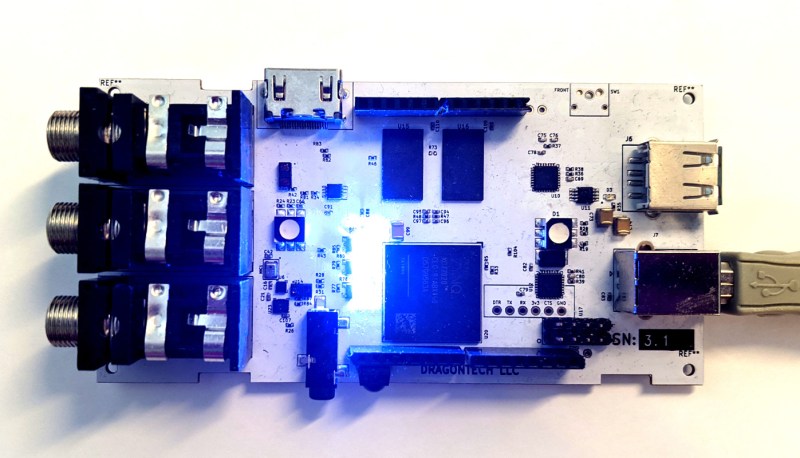Audio and video synthesizers have been around for decades, and are pretty much only limited by one’s willingness to spend money on them. That is, unless you can develop your own FPGA-supercharged synthesizer to really get a leg up on the consumer-grade components. Of course, as [Julian] found out in this four-year project, you tend to pay for it anyway in time spent working on your projects.
[Julian] has actually decided to stop working on the project and open-source it to anyone who wants to continue on. He has already finished the PCB layout on a gargantuan 8-layer print, done all of the routing and parts selection, and really only needed to finish testing it to complete the project. It’s powered by the Xilinx Zynq and is packed with features too: HDMI, DDR3 ram, USB, a handful of sensors, and an Arduino Uno-style header to make interfacing and programming a breeze.
While we’re sympathetic with setting aside a project that we’ve worked so hard on, with most of the work done on this one it should be pretty easy to pick up and adapt for anyone interested in carrying the torch. If you were hoping to wet your whistle with something with fewer PCB layers, though, we’ve seen some interesting (but slightly simpler) video synthesizers made out of other unique hardware as well.

















>> with most of the work done on this one it should be pretty easy to pick up and adapt
I’ve fallen for that a few times..
Well, there is not even a GIF demonstrating this project works.
I hat the “supercharged” clickbait in the title. Just because there is a FPGA and bulky connectors.
In contrrast, Milkymist project http://m-labs.hk/gateware/m1/ , which uses also an FPGA is very mature, polished, had a great control software, but yeah, it is not “supercharged”
Hi Rok,
The zynqPCB can definitely be considered “supercharged” WRT the Milkymist. The FPGA is twice as powerful by most metrics:
XC7Z020 (zynqPCB): 85K PLC, 53200 LUT , 106400 FF, 4.9 Mb Block Ram, 220DSP, 276GMACs
XC6SLX45 (milkyMist): 44K PLC, 6822 Slices, 54576 FF, 2.1 Mb Block Ram, 58 DSP, ???GMACs
In addition, zynqPCB has a dedicated processor as part of the Zynq chip, significantly more RAM, and as much storage space as your SD can hold!
Also the interfaces are more modernized and higher bandwidth
The zynqPCB has a lot of promise, but yeah there is some work to be done
I understand your hesitation. There are some tasks that need to be undertaken before this board is fully brought up. My last hardware run, I used the wrong size footprint for the SPI Flash and tried to solder it by hand. That’s the main reason I am unable to thoroughly test the large amount of interfaces on this board. This issue is resolved in the current repo
The most significant tasks remaining are (copied from repo readme):
Development of Boot firmware for the SPI flash which loads the linux kernel from the SD card
Development of a basic shell block diagram in Vivado
After that, all this power could be yours
Seems like a good time to plug the XVA/XFM FPGA based synths… https://www.futur3soundz.com/da-blog
what a nice sounding synth! do you know if the VHDL/Verilog for it is available?
Hi,
Where did you manufacture the PCB?
PCBWay!
“8-layer print”? Print?
Yes, printing or “photo-plotting” is a term used in the industry for the transfer of a layer design onto the PCB substrate. PCBWay has a phenomenally detailed description of the entire process (with videos!) including step 3, “print inner layers”
Give this a look. It has been incredibly informative to myself as a PCB designer:
https://www.pcbway.com/pcb-service.html